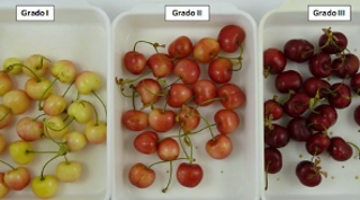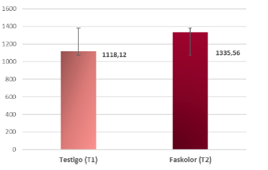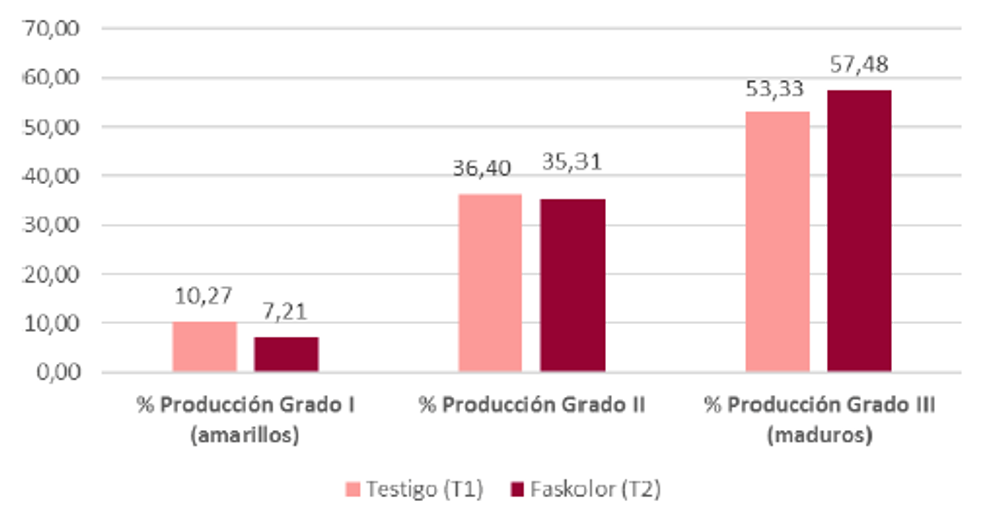In the 2019 campaign, the Fruit Crop Nutrition Group (NCF) of the Aula Dei Experimental Station (EEAD-CSIC) carried out a trial on Primigian cherry for the company CULTIFORT, located in La Almunia de Doña Godina (Zaragoza).
The trial consisted in the application of 2 foliar treatments with FASKOLOR, at a dose of 300 cc/Hl, 21 and 15 days before harvest respectively, with the aim of advancing and homogenizing the ripening of cherries of early harvesting varieties, whose main problem is the great heterogeneity in the ripening, becoming necessary 3 or 4 passes until the total harvest.
The harvest of the FASKOLOR treatment was carried out on May 27, 2019, coinciding with the moment when the farmer made the first pass on the rest of the untreated trees, in order to evaluate whether on this harvest date, the production of mature fruit from the trees treated with FASKOLOR was greater than that of the trees in the WITNESS group.
In order to carry out all quality determinations at harvest, the entire production of the central tree of each experimental unit was re-collected:
- From a sample of 50 fruits, the physical-chemical parameters, destructive and non-destructive, were determined at harvest.
- The rest of the harvested production was classified by degree of maturity
(Figure 1).

Figure 1. Visual aspect of the different degrees of maturity analysed
In the quality parameters analyzed, significant differences were found that demonstrate a positive effect of the FASKOLORtreatment in terms of fruit ripeness. These parameters were the following:
- Firmness of fruit. Greater firmness of the fruits of the control group, indicative of a more delayed state of maturity.
- Transverse gauge. The largest size fruits were treated with FASKOLOR.
- Soluble solids. Higher concentration was found in fruits treated with FASKOLOR.
- Acidity (malic acid) Higher concentration of malic acid in the fruits that had received the FASKOLOR
The weight of 120 fruits was collected, from each treatment and block. Fruits that had been treated with FASKOLOR registered a higher average weight than the samples of the WITNESS group (Figure 2).

Figure 2. Weight (g) of 120 fruits in harvest.
Slight differences were observed in the color coordinates, with darker shades especially in the fruits treated with FASKOLOR. The increase of the absorbance value at 520 nm (anthocyanin content index) in the fruits that had received the treatment with FASKOLOR should be highlighted.
Regarding production according to the degree of maturity, fruits treated with FASKOLOR presented a higher percentage of mature fruits than WITNESSES and, on the contrary, a lower percentage of immature fruits in degrees of maturity I and II (Figure 3).

Figure 3. Percentages of production at different levels of maturity assessed.


